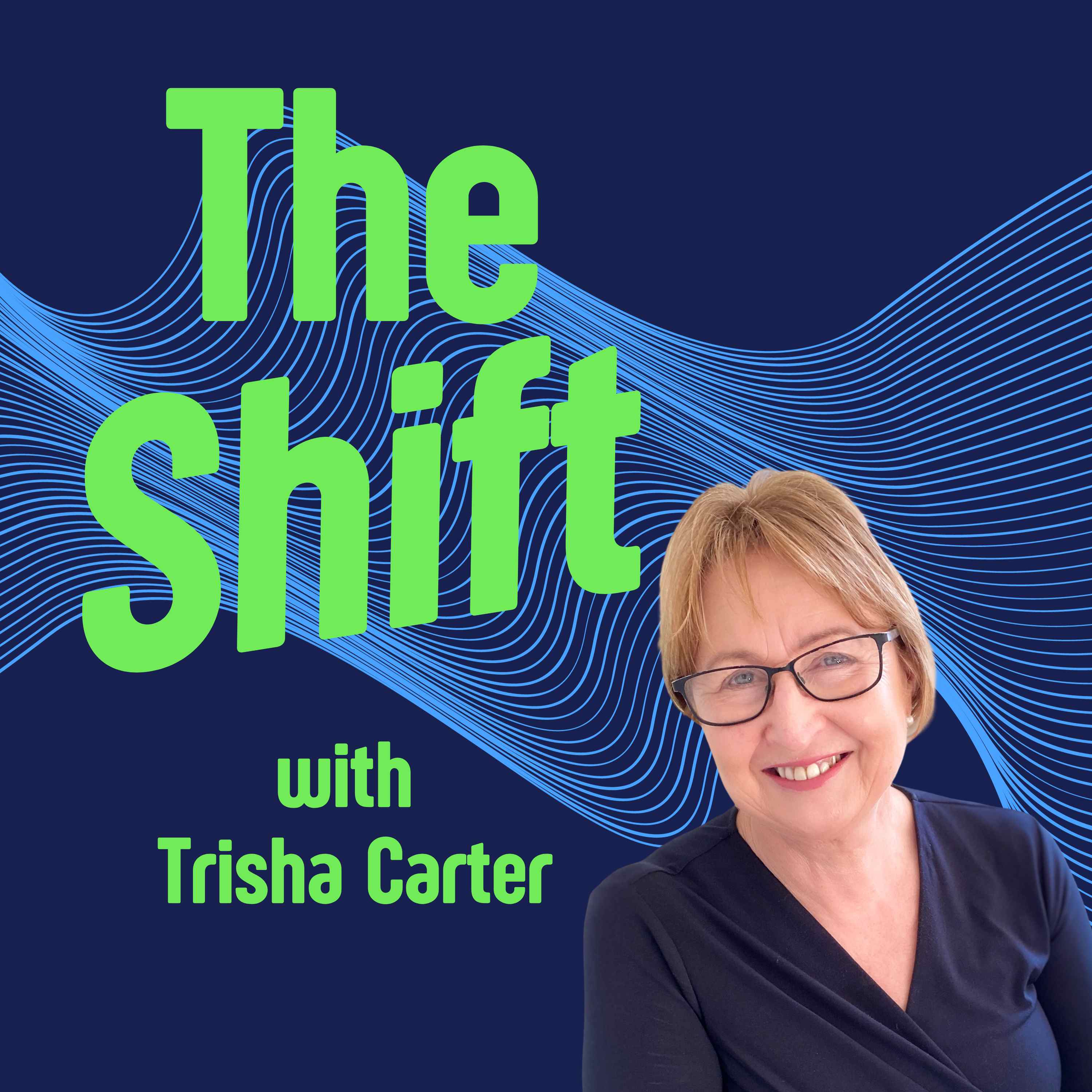Episode 52
Recognising Moments of Shift
This week, Trisha Carter, an organisational psychologist, introduces the second series of 'The Shift,' focusing on enhancing cultural intelligence. She revisits the four foundational areas of cultural intelligence: CQ drive, CQ knowledge, CQ strategy, and CQ action, emphasising the metacognitive aspects. Trisha introduces the 'Shift Signals Guide,' a tool to recognise pivotal moments of cultural shift using the acronym S.H.I.F.T. (Sensations, Hesitations, Intense emotions, Frames of reference clashing, Time perception altering). The episode explores each signal in detail with real-life examples.
A downloadable guide will be available on Substack.
Make sure you join Trisha in this journey of growth and discovery throughout the year via Substack or LinkedIn.
Transcript
[00:00:20]
[:[00:01:08] Well, friends, I'm welcoming you to series two of the Shift, and before we dive in, I do want to briefly remind you of the four areas of cultural intelligence that form the foundation of our discussions. There's the motivational CQ, CQ drive, which is our interest and confidence in functioning effectively in culturally diverse settings.
[:[00:02:03] Today. As always, we especially focus on the metacognitive aspects. Thinking about our thinking when it comes to culture.
[:[00:02:39] Today we're focusing on a framework I've developed called the Shift Signals Guide, a tool to help you recognize when you're experiencing one of those pivotal moments of cultural shift, and maybe for those of you who are coaches, to be able to sense when maybe your coachees are in that moment as well.
[:[00:03:22] They're essentially gateways to developing cultural intelligence. There's research from neuroscience, psychology, and intercultural studies that show that these moments do follow patterns. The shift framework. We'll help you identify when you are experiencing a cultural shift by paying attention to the five signals.
[:[00:04:00] So the shift acronym stands for S is for sensations in your body. H is for hesitations in your thinking. I is for intense emotions. F is for frames of reference that might clash and T is for a time perception that might alter. So let's explore each one of these signals in detail. First of all, s for sensations in your body.
[:[00:04:51] In previous episodes, we've heard several guests speak about how physical sensations can manifest as intuitive feelings and Cath brew shared this experience,
[:[00:05:11] Trisha: Mark Williams explained the neuroscience behind this when he spoke about the part of our brain that recognizes faces.
[:[00:05:48] But now if you think back in evolutionary history, we would have originally spent most of our time with our family. We would have been in really small groups and we would have been traveling around and we would have wanted to know who was in that family. And therefore that that template and method works really well, because what it does is it sets off the fight or flight response.
[:[00:06:30] Trisha: But these physical sensations aren't always negative or alarming. Sometimes they signal positive shift moments as Grace Boker Mungkaje described when hearing Welsh spoken for the first time.
[:[00:06:58] Trisha: Greg Desley shared a similar positive physical reaction when he used language to connect with people in one of his workshops
[:[00:07:19] I think it did. Um, and yeah, so that was a bit of a shift in understanding that there'd been a connection and that somebody valued recognition of, of their culture.
[:[00:07:36] And then H stands the hesitation in our thinking. It's the second signal. Cultural shift moments often disrupt normal thought patterns. You might suddenly feel like things have stopped for a moment. You might experience a mental pause or a processing delay.
[:[00:08:16] Again, Dr. Mark Williams, the neuroscientist, explain why we experience this hesitation
[:[00:08:29] And, and you can call it consciousness if you like, but it's, it's. It's your working memory and, and your working memory is really limited. It's, well, we originally talked about seven slots in your working memory, so you're only able to, which is why phone numbers used to be limited to six or seven numbers. cause that's all you could hold in your working memory while you dialed those numbers.
[:[00:09:06] Mark: we don't see everything. We only see what we're actually attending to. Your attention is what determines what goes into your working memory.
[:[00:09:19] Trisha: David Livermore shared a perfect example of experiencing this hesitation during his story about working with a Chinese interpreter,
[:[00:09:41] And she says, I've heard him share this a few times now, but. I still don't really get the point of this story, and I go on and tell the next part of the story and she says, but we don't want our esteemed guests to lose face. So when I cue you laugh very enthusiastically at the part that he thinks is funny.
[:[00:10:15] And I'm like, no.
[:[00:10:25] The third factor, the I is for intense emotions that might arise. This is the third signal, and it might be that we just don't expect to have an emotional response and suddenly we're feeling something.
[:[00:11:08] David Livermore's story continues with him describing an awareness of this emotional intensity.
[:[00:11:25] Trisha: So these are examples of emotions that arise and that accompany the sense of something is different.
[:[00:11:56] It might feel like your expectations are being violated or that your judgments are wrong. It could be you're doing a mental translation of what's happening, or you could be questioning your own identity.
[:[00:12:18] Grace: so I never really knew, you know, why I couldn't do that. And later on as I went, like, um, like through life as I went on to further my education and then when like began working life in Papua New Guinea, I realized that um, there will be many moments where I am.
[:[00:13:00] So when to apply that. Mm-hmm. And then when to apply my melanesian cultural values, which is there's sometimes that, um, I, I, I cannot do certain things. It's not acceptable for me as a woman.
[:[00:13:18] Grace: she told me there's a time to be quietly bold, and there's a time to just be outright bold.
[:[00:13:32] Trisha: Grace is a third culture kid at TCK and Tanya Crossman, who also at TCK, who researches third culture kids shared one of her conscious moments of frame shifting
[:[00:13:52] You know, why, why, why can't you just say thank you? And for whatever reason it, it struck me in that moment. Why? Why can't I just say thank you? Why is it my go-to reaction? To tease and to mock and to give someone a hard time?
[:[00:14:15] and then we finally get to the T of shift, the final signal. That's when time perception alters. So you might have the sense that. Cultural shift moments are impacting on your sense of time.
[:[00:14:51] When we are in a moment of shift, we need to jump from automatic processing, which happens easily to more deliberate thinking.
[:[00:15:22] Mariette: Your job, in fact, is to think about what's coming next. So you do not think about the costume change. You think then about not just the next scene, but what do I want from this person I'm working with?
[:[00:15:50] David: And actually I think that's where the Shift happened, I was like, Oh, there was there was a concern. And actually I think the concern was it was a self-effacing story, which would work well in many Western environments. But for them, not only might be losing face for me, but for the audience, for the organizers, the very first thing they hear from this guest is a way that he failed..
[:[00:16:39] Seeing the frames of reference shift and recognize that it's a cultural shift moment and just accept the discomfort that might be happening as part of a natural part of cultural learning, and then respond thoughtfully rather than reactively.
[:[00:17:15] S, sensations?
[:[00:17:22] H hesitation? Am I struggling to process this normally? Notice your mental pauses, the uncertainty or the awareness that you're making some assumptions.
[:[00:17:45] F - the framework shifting? Are my cultural values being challenged? Look for those collisions. Or when you do see those extremes of values, different values, and you might see an impulse to judge, or you might feel an identity question, who am I in this moment?
[:[00:18:29] As a coach, I hope that you would be able to help the people that you are coaching recognize their shifts as well and help them to process those shifts well.
[:[00:19:05] I've created a downloadable shift signals guide that will be on our substack. This guide includes the framework we've discussed today, along with additional examples and exercises to help you recognize and learn from your own moments of shift and to help your coachees if you are a coach.
[:[00:19:44] So please reach out and connect with me on LinkedIn if we aren't already. And message me if you'd like to talk more about recognizing your moments of shift. Thank you for being part of the shift today. If our conversation sparked insights for you, consider sharing it with someone who might benefit, whether they're working globally or they're simply interested in expanding their cultural perspective.
[:
